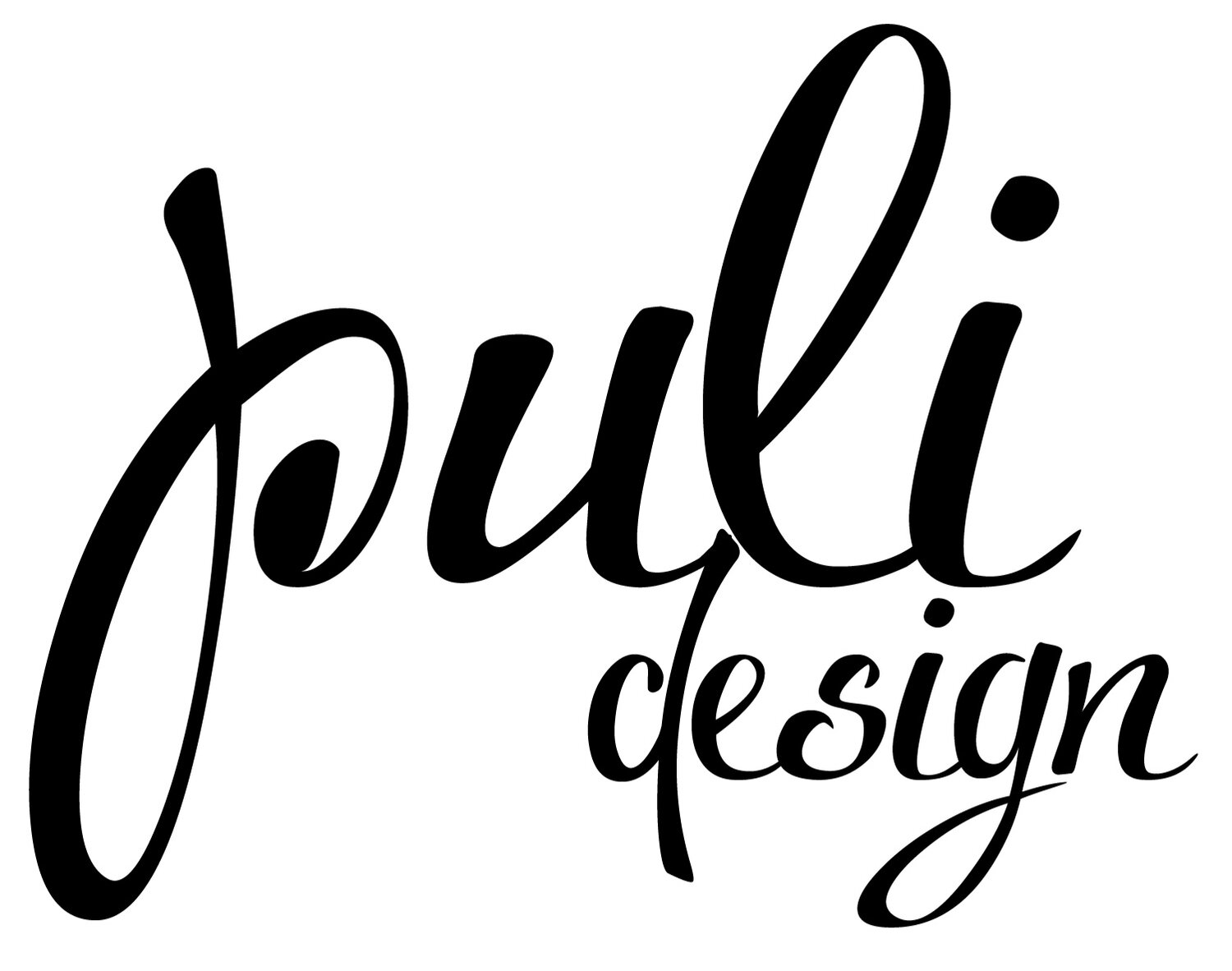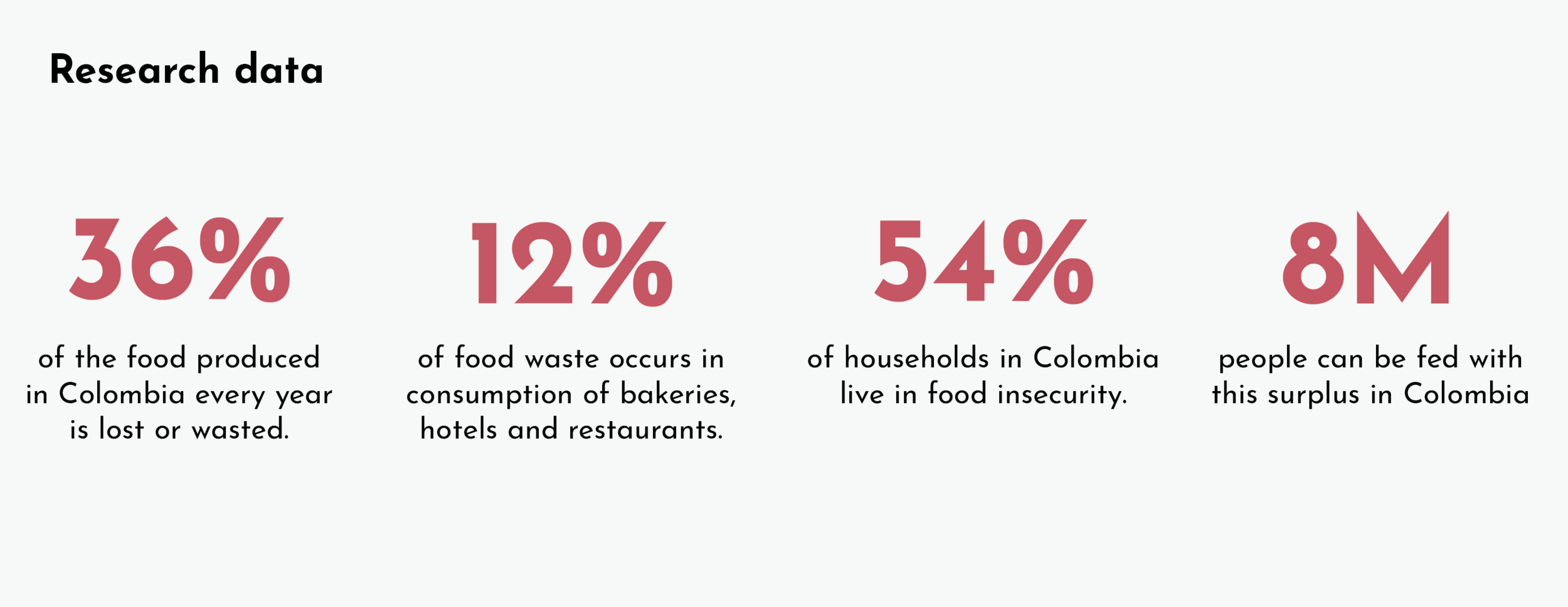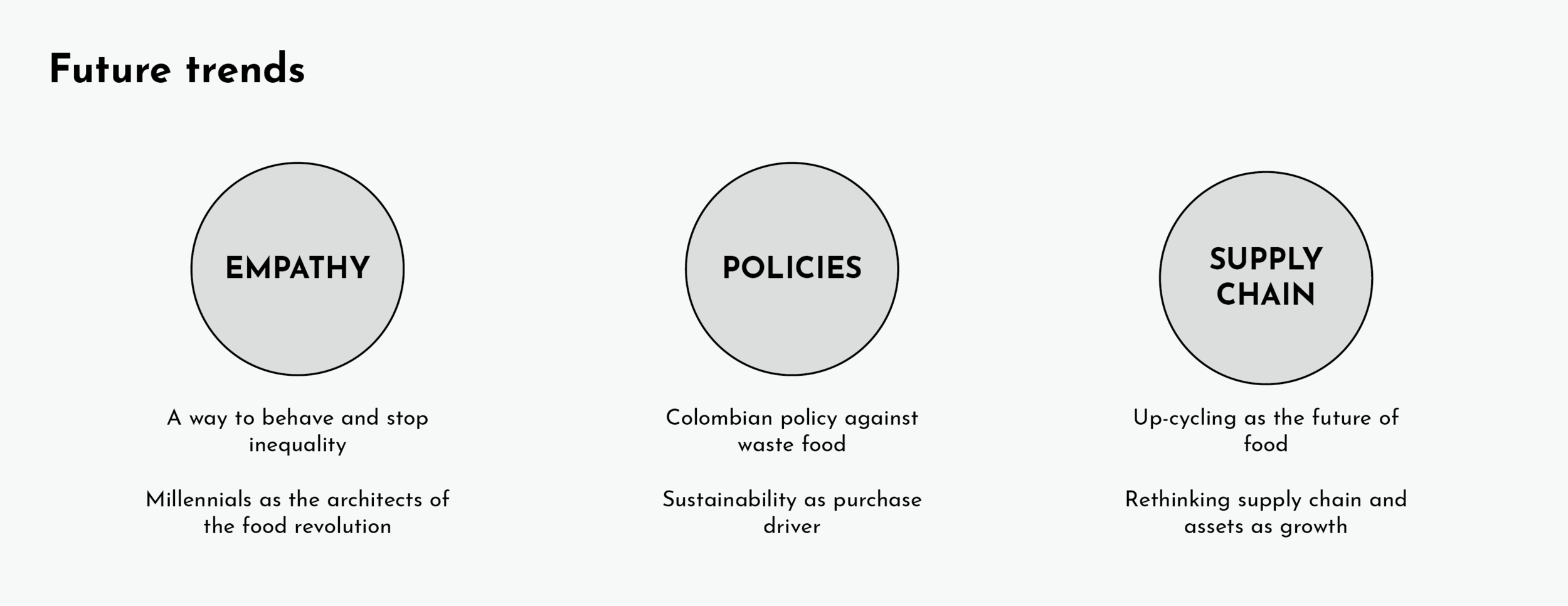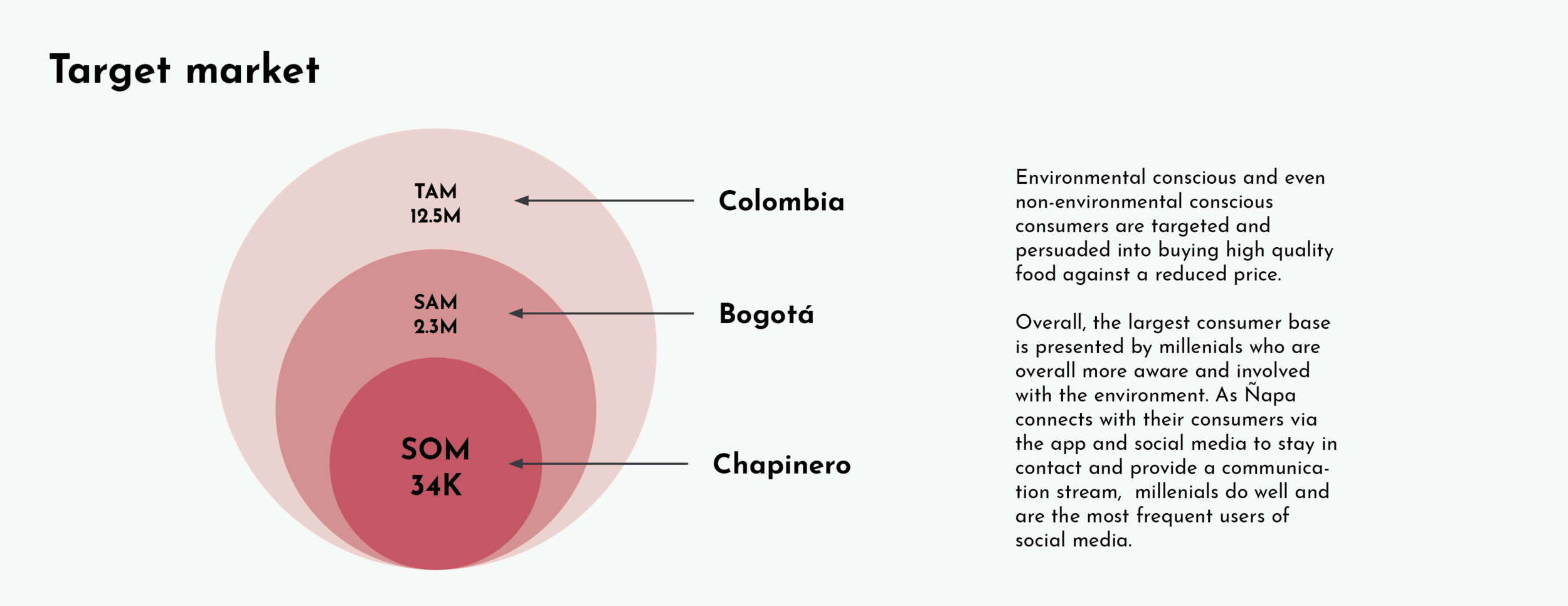Ocean Flex
Digital platform that allows . By providing customers a geo-localization of their containers within their shipments, they ensure data ETA/ATA high-quality for their clients through the app can save up to 50% off the original price, and reduce potential food waste. The app encourages foodies to share their passion while contributing to a good cause by providing a donation for those who live in food insecurity instead of giving a tip, in addition create a new revenue stream for the restaurants and baker surpluses.
Role:
User research, Product Design, UX/UI Design
Client:
Project44
Team:
Innovation Lab
Date & Place:
Nov 2021 - July 2022. Medellin, Colombia
Project Overview
Context
It is April 2022, after 24 months of the Colombia’s first case of coronavirus and the COVID-19 pandemic has passed, the vaccine has been spread all over the world. One of the most serious consequences of the pandemic is the increase in the already high levels of food surpluses, which do not reach the 8 million people that could be fed with the wasted food.
People are returning, though at a slow pace, to social life. Despite this, restaurants, bakeries and others, now have more food surpluses than ever before. In addition, a new law has been enacted in Colombia regarding up-cycling food in the supply chain, whereby food producers are allowed to add value to surplus-products that might otherwise land in the trash bin, thus turning into waste. This is why Ñapa was create. We are a digital platform that will connect restaurants and bakeries with food surpluses, to environmentally conscious consumers, to reduce food waste in Colombia and food insecurity through donations.
Challenge
Reduce a significant percentage of the food waste generated annually in Colombia, while creating a new revenue stream for surplus food in establishments such as restaurants, bakeries, among others.
My role:
My role in the initiative was as Service Designer & Researcher. I was leading and guiding the Casa de la Infancia Foundation team on how to use Human-centred design techniques for collaboratively design the experimentations and interventions. I designed and facilitate the workshops, planned and conducted researcher, analyze the data and communicated the insights, and conceptualized and crafted the proposal with the team. I also was in charge of building the relationship and enhancing collaboration with our partners and lead the design team.
Design Process
Research
After a kick-off meeting with Iberia, we had clear which were the goals and the purpose of this project. We draft the questions that should be addressed in the research stage. With the objectives mapped out, and all the questions defined, we planned the research.
Primary Research: user surveys and interviews
With the goal of understanding the motivation and behaviour of the travelers we were designing for, but also to include their perspective during the post-Covid, we combined surveys and deep interviews to understand users’ needs and how these travelers are relating to airline companies during these times of uncertainty. We wanted to understand how these users’ answers would vary depending on their travel needs and customs, so we separate our users into bleisure, long-haul, and leisure/family.
Secondary Research: desk research, literature review, competitive analysis
To get a better understanding of the airline landscape we combined advanced twitter research, reports review and we conducted a macro-analysis and found that airlines have adopted a variety of strategies.
Taking these insights into account, we conducted a deep dive specifically on the insurance and MaaS (Mobility as a Service) ancillaries. We found that while airlines, insurance, and MaaS provided a wealth of information for travelers to read through, there was some information overload. This could prove overwhelming for some users, especially those new travelers.
After we had a better understanding of the new post-Covid travel scenarios, we defined which implication each of those research could have in our project, and which considerations we should take.
Define
We analyze and synthesize all the data collected from primary research, and we start defining the design requisites for our project, and then jumped into more detail to ensure that we collected everyone’s thoughts. By understanding our users’ needs we were able to create our user journeys for our MVP.
For the secondary research and insights from the competitive analysis, we lay out all our research findings in an affinity map, to analyze and manage the information in a more accessible way within the team. We identified patterns, underlying themes and even some contradictions, so having the key information mapped out help us in to having insightful conversations.
After the research was synthesized, we joint together and the first thing we did was align into the findings, then we brainstorm a bunch of different How Might We questions and clustered them. We translated the insights into “How might we..?” to reframe the challenge, set priorities and clear guidelines for the ideation phase.
“How might we decrease the perception of risk in order to drive traffic to Iberia?”
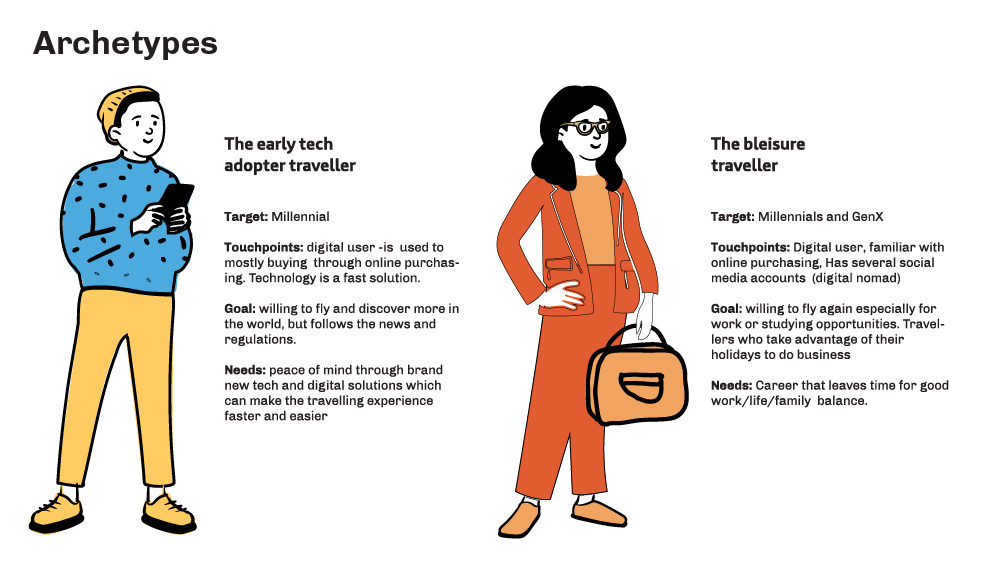

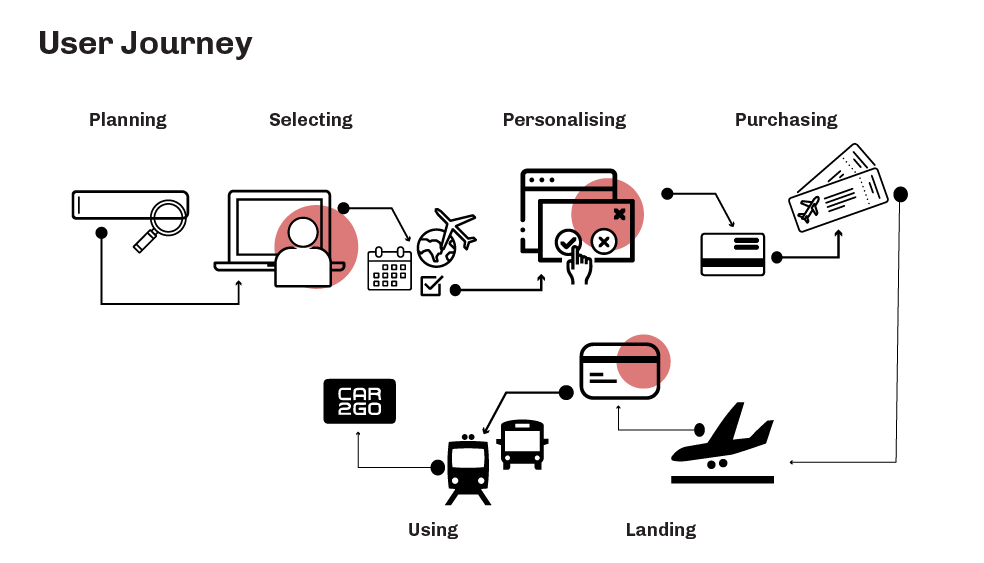
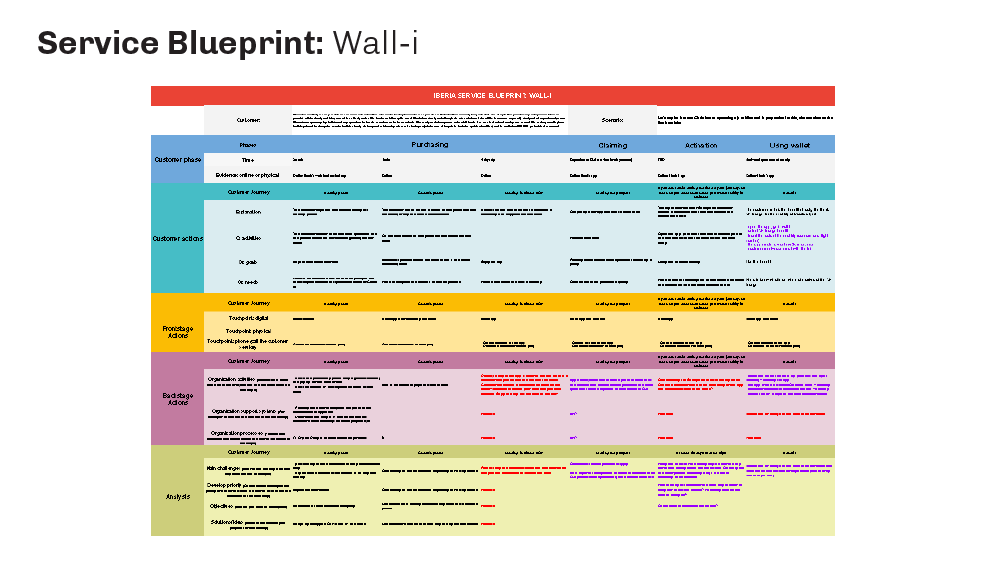
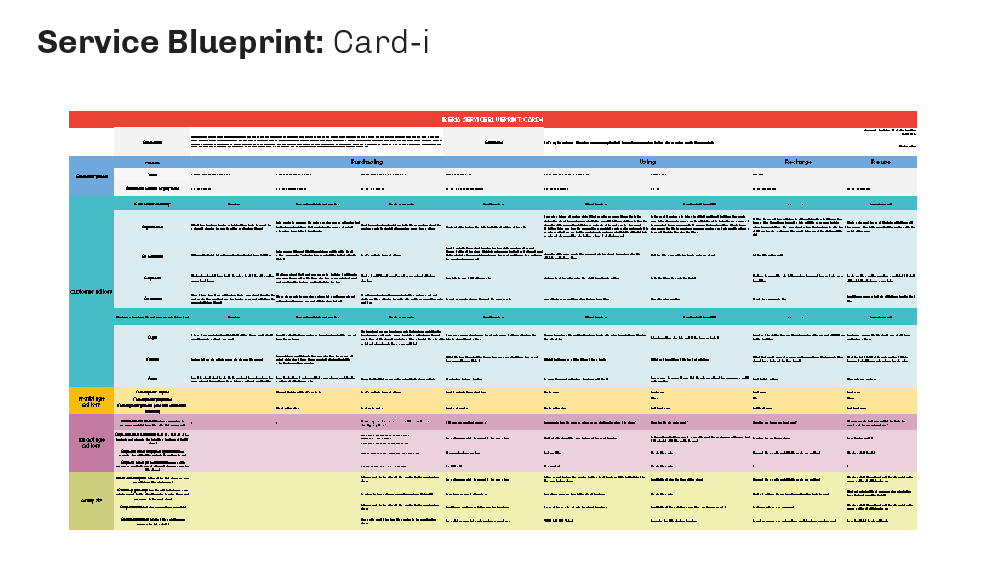
Ideate
A very divergent approach was taken in order to generate as many ideas as possible. In addition to general product research, we conducted several sketching sessions to approach the final proposal. The aim was to create a product that was both easy to use and aesthetically pleasing. Next to examining the feasibility and product design, we focused on the development of a user-centered service and a viable business model.
Through our analysis, we came up with our services that address both peace of mind and convenience through wall-i, a comprehensive insurance policy with a wallet facility that revolutionizes the function of insurance beyond the moment of tragedy, as well as the card-i travel card that deconstructs client interaction beyond the flight and airport.
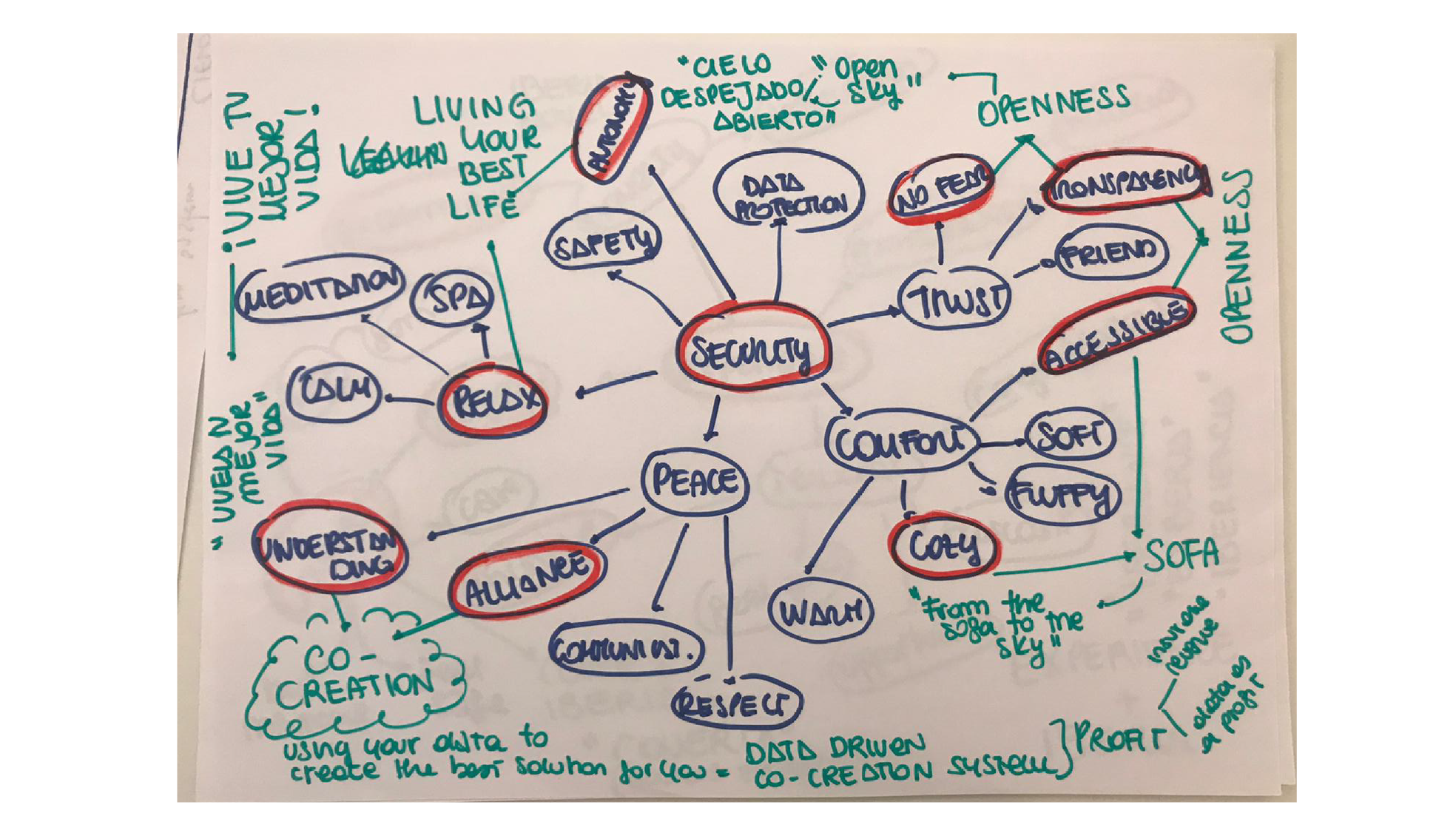
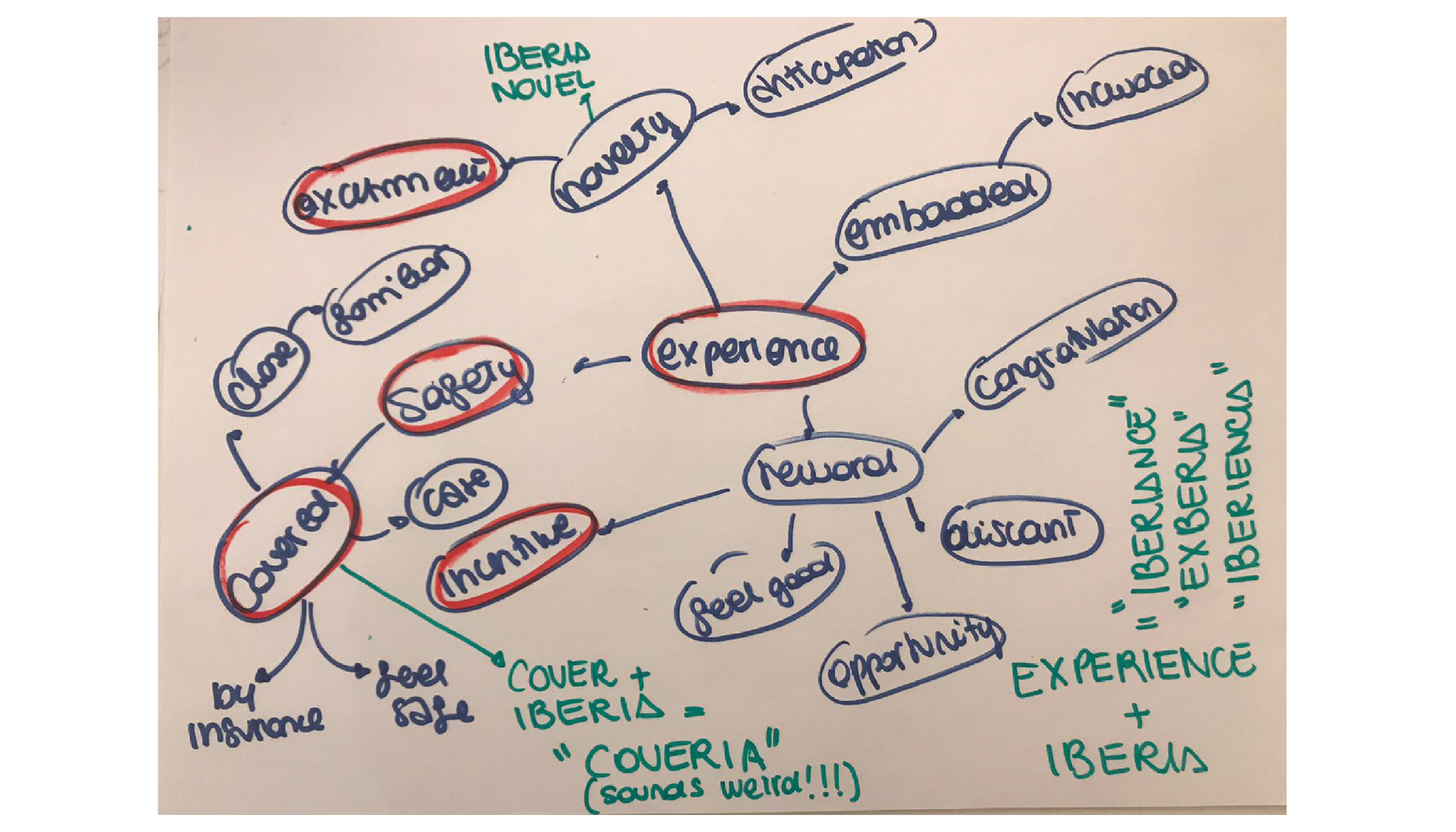



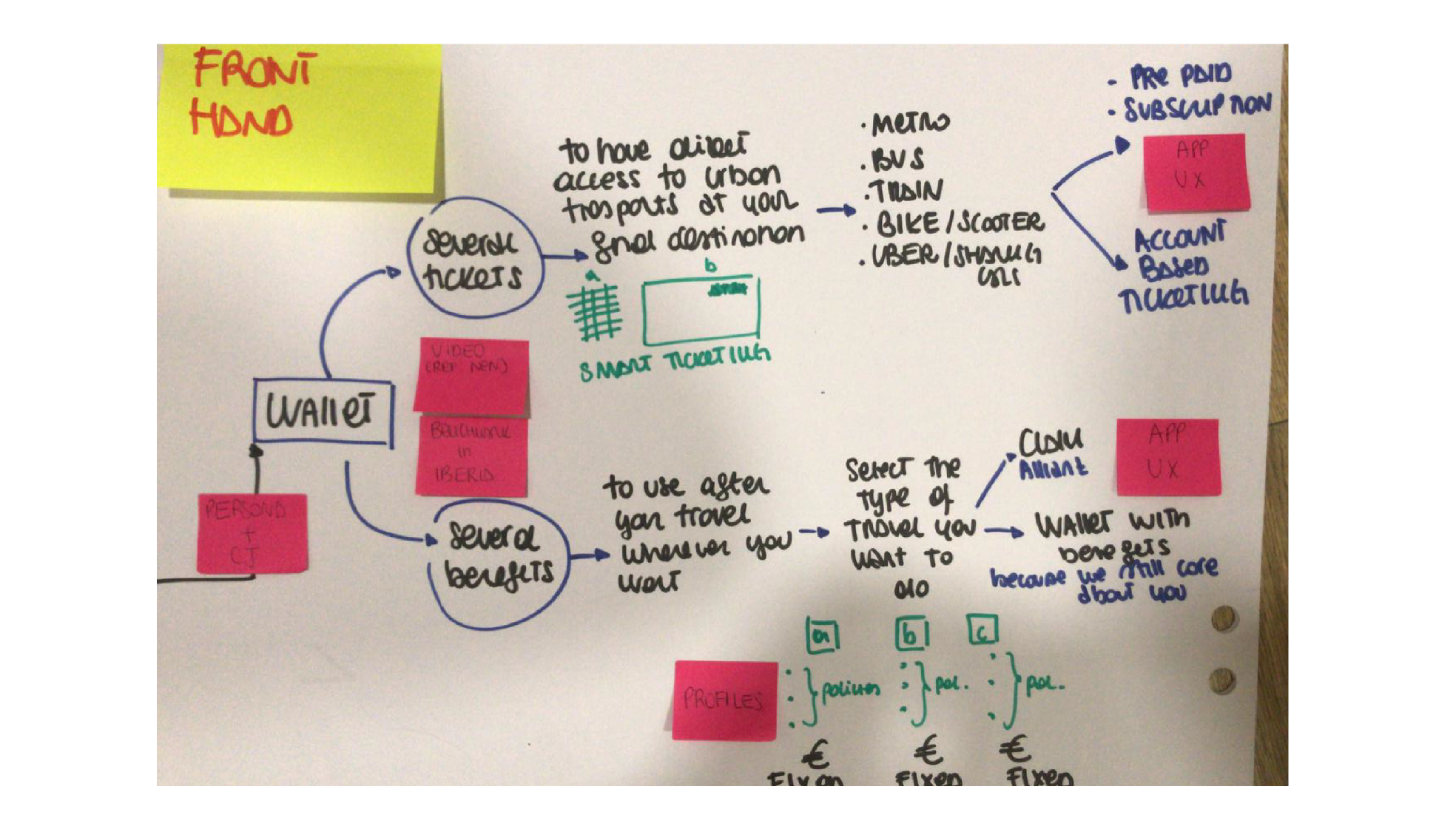
Prototype and Test
At this stage, after some iterations and previous paper mockups, the final prototype was designed. It was important for us to ensure the alignment of the design requirements and also have a service as seamless as possible.
Even though we were in an unthinkable situation regarding Covid-19 and all the protocols we had to take into account, it was possible for us to conduct user testing. After developing a first app prototype, we wanted to verify our assumptions in a qualitative user test. We encouraged the test persons to think aloud. With the help of a test guideline that we created in advance, we were able to gain valuable insights and integrate them into the final app design.
Here we tested our final prototypes and our services (Card-i and Wall-i) for their user experience and general usability with different test persons.
Moreover, we conducted over 5 user interviews at an earlier stage to find out the needs and desires. This allowed us to verify our assumptions and further improve our product.
The further implementation was on our partners, but to make sure that the experience is seamless we have to be completely coordinated.
The Solution


